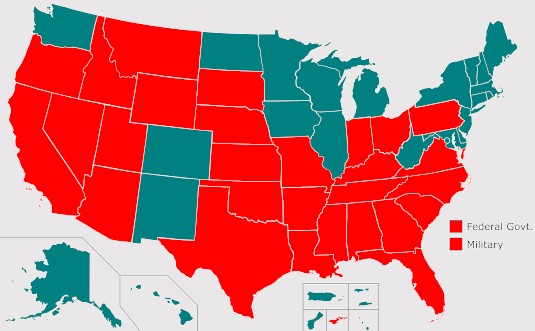The death penalty has been a sensitive topic in the United States for many years. Although 28 states still allow the death penalty, more states have continued to abolish it. Over the past few decades, previously verifiable reasons for the death penalty have become more questionable. A poll taken in 2018 showed that 54% of Americans support the death penalty. A more recent poll conducted in 2019 shows that number has increased by 2% in America, bringing the total up to 56%. In 2021, are there still reasons to be in favor of the death penalty?
 Photo courtesy of Pixabay
Photo courtesy of Pixabay
__________________________________________________
Unlike serving time behind bars, a death sentence cannot be reversed once it has been enforced. As of 2020, there are 28 death penalty states, including Missouri, and 22 non-penalty states. The death penalty, also referred to as capital punishment, has been in America’s government system since 1608 around the time European settlers set foot in the New World. The United States deemed the death penalty constitutional in 1976, and as of July 2020, 1,516 people have been executed while on death row. Of these 1,516 criminals, two prisoners in Washington and one in Delaware have been executed by hanging between 1993 and 1996, three by firing squad in Utah where the most recent person executed was 49-year-old Ronnie Gardner, who was executed in 2010 for murdering a male, 11 by gas chamber in Nevada, Mississippi, Arizona, California and North Carolina, 163 by electrocution and 1,336 by lethal injection. Of all death row cases since 1973, 172 death row prisoners have been exonerated of all death row-related charges due to wrongful convictions against them. In 2005, the United States Supreme Court, through Roper v. Simmons, concluded the death penalty for juveniles was cruel and therefore abolished it. Since 1976, 22 individuals have been executed for crimes committed while under age prior to Roper v. Simmons. Did you know the death penalty can be enforced for crimes other than murder? Other crimes that allow the death penalty include treason, aggravated kidnapping, drug trafficking, aircraft hijacking, placing a bomb near a bus terminal, espionage and aggravated assault by incarcerated, persistent felons or murderers. Many people assume it is less expensive to execute a criminal because of the high cost to house a prisoner and pay for necessary health needs. In more recent studies, these assumptions have been proven wrong. Some of the higher costs associated with inmates on death row include the legal expenses for lengthy trials and appeals, the necessity for representation in the courtroom and the vast number of inmates on death row who spend their days in solitary confinement. Why is the cost for the death penalty so high? A recent study completed by the Death Penalty Information Center revealed the extreme debt our nation has incurred as a result of capital cases. From this study, we learned the death penalty in Florida requires $51 million more per year than what a life in prison without parole sentence would cost for all first-degree murderers. When comparing the cost with the 44 executions completed in the state since 1976, the cost per execution is about $24 million per case. Though California imposed a moratorium on executions in 2019, another study about California from 2011 revealed that $4 billion has been spent since 1978 for the process of capital punishment in the state. Some support the death penalty because it makes it impossible for criminals to do bad things repetitively, it can be cheaper than prison in some cases, it discourages other individuals from breaking the law, or families who have lost a loved one due to a murder feel the only opportunity for closure is for the person who took the life of your loved one to lose their life too. Reasons against supporting the death penalty may be that some people are actually innocent, it’s cruel, especially considering some states still allow execution via electrocution, hanging and firing squad, it minimizes the chance for that person to change, and it is committing another murder. The Death Penalty Information Center reported in 2013 counties that have sentenced prisoners to death row the most have some of the highest reversal accounts, and many have been responsible for errors and inexcusable mistakes in the justice system. The district attorney in Maricopa County in Arizona was disbarred for misconduct in 2013 due to excessive use of the death penalty. This county had four times more in-progress death penalty cases than Los Angeles or Houston. During the tenure of one district attorney in New Orleans, four death row inmates were exonerated and freed because of prosecutorial misconduct, bringing a stinging rebuke from four justices of the U.S. Supreme Court. More than 170 people have been exonerated from death row due to evidence proving their innocence since 1973. This averages to approximately 3.5 death row inmates who have been wrongly convicted each year. Imagine if your brother, sister, mother, father, friend, son or daughter were on death row for a crime they didn’t commit and neither of you has the means to hire adequate representation. Or maybe they did make a horrible mistake, but in the years spent in prison, their life is turned around, and for their unbearable, humiliating past mistakes, they have begged the creator of the universe to extend His mercy for forgiveness. Think about the regret, anger, sadness, bitterness, emptiness or heartbreak that would be held heavily over your heart for years and years. I know I wouldn’t be able to sleep at night, but could you?History Behind the Death Penalty
Cost
 This graphic, using data from the National Conference of State Legislatures, shows which states use the death penalty, indicated in red, and which ones do not, indicated in blue. Graphic by JayCoop
This graphic, using data from the National Conference of State Legislatures, shows which states use the death penalty, indicated in red, and which ones do not, indicated in blue. Graphic by JayCoop
Reasons to Support
Reasons to Oppose
Now, Making it Personal